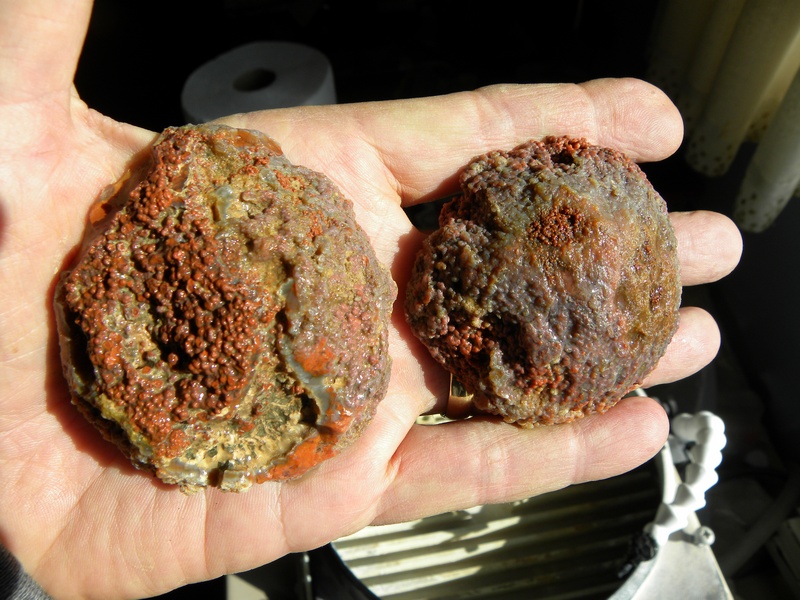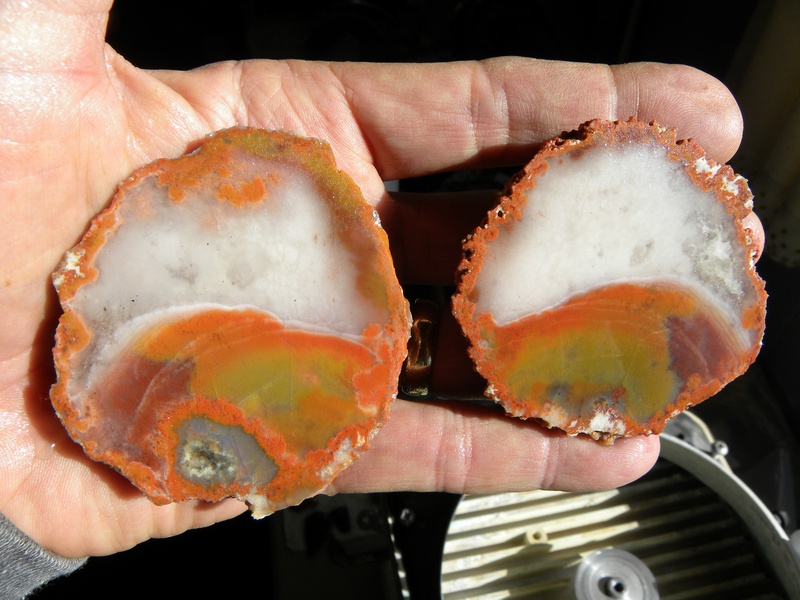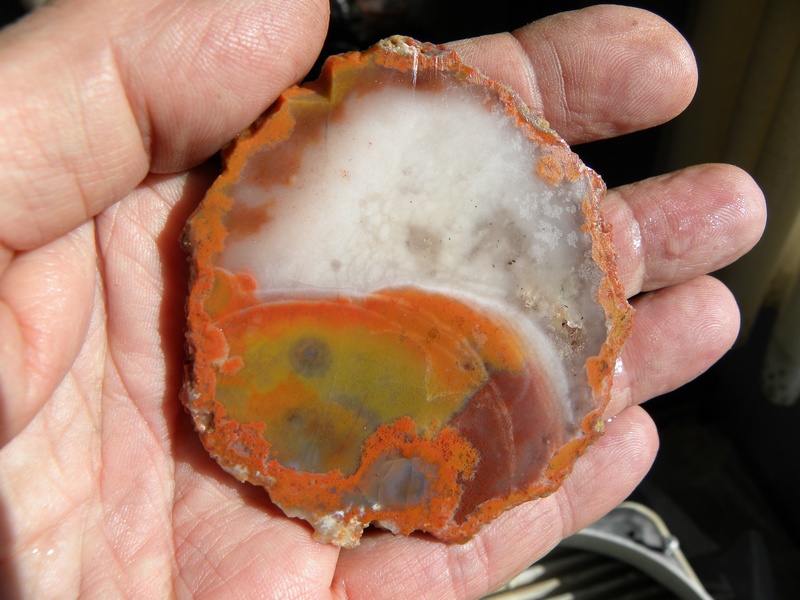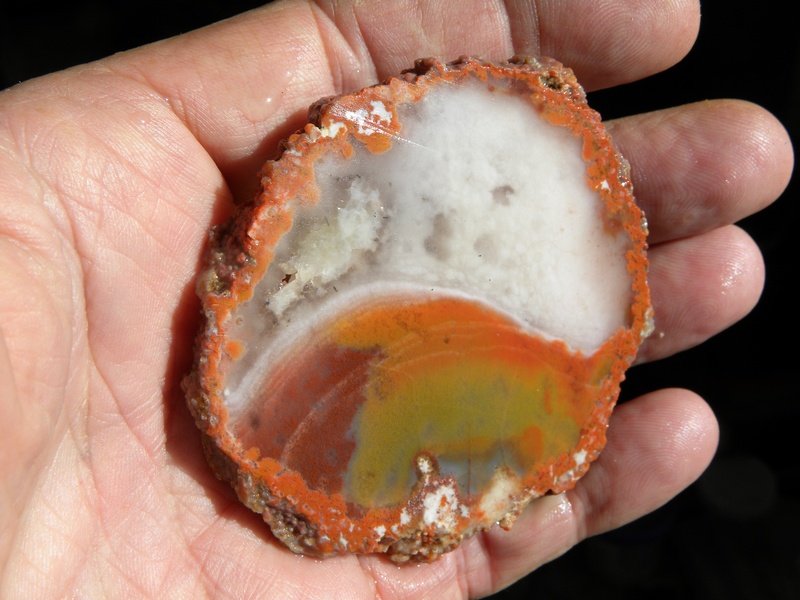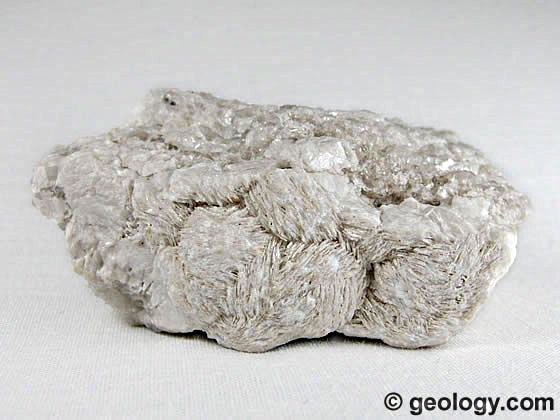|
|
Post by hummingbirdstones2 on Nov 20, 2022 21:38:59 GMT -5
That's what members of our club who went on field trips there said, anyway. From "halfway between Hanksville and I-70" is what I was told.
Photos are front and back of the two "halves", and both sides of the slice I took out of the middle.
I've never collected there, so this is a new one to me.
|
|
|
|
Post by vegasjames on Nov 21, 2022 6:25:00 GMT -5
Looks like a chalcedony nodule.
|
|
|
|
Post by hummingbirdstones on Nov 21, 2022 10:20:09 GMT -5
1dave do you have any idea what it is? RWA3006 What about you?
|
|
|
|
Post by hummingbirdstones on Nov 21, 2022 10:27:22 GMT -5
It’s a barite nodule as the members of the club suggested. The ones I’ve cut all were partially agatized,possibly a pseudomorph of agate after barite. Thank you!  |
|
|
|
Post by amygdule on Nov 21, 2022 12:46:37 GMT -5
That looks more like a Grape Agate to me.
The barite nodules that I have seen, show the radiating crystal growth of the barite when you cut them open.
|
|
hypodactylus
spending too much on rocks
 
Member since July 2021
Posts: 481
|
Post by hypodactylus on Nov 21, 2022 12:56:16 GMT -5
Edit: Looks like I was too slow at making my post; amygdule beat me to it! 🙂 Those don't look like agatized barite nodules to me. Agatized Barite tends to preserve at least some of the original barite mineral structure. Like this:
Yours looks more like what I have come to know as a type of Utah Grape Agate. Probably due to the tiny grape like structures that tend to be found on the exterior of the nodules. I didn't come up with the name and it may be incorrect. Hope that helps. |
|
RWA3006
Cave Dweller 
Member since March 2009
Posts: 4,641 
|
Post by RWA3006 on Nov 21, 2022 14:18:42 GMT -5
For certain it came from the famous grape agate deposit between Hanksville and I -70.
|
|
|
|
Post by 1dave on Nov 21, 2022 14:57:41 GMT -5
Barite, baryte, or barytes is a mineral consisting of barium sulfate. Barite is generally white or colorless, and is the main source of the element barium. Chemical formula: BaSO4. 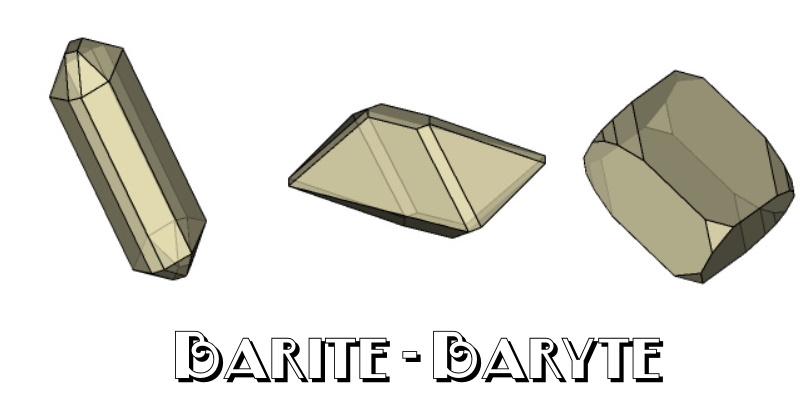 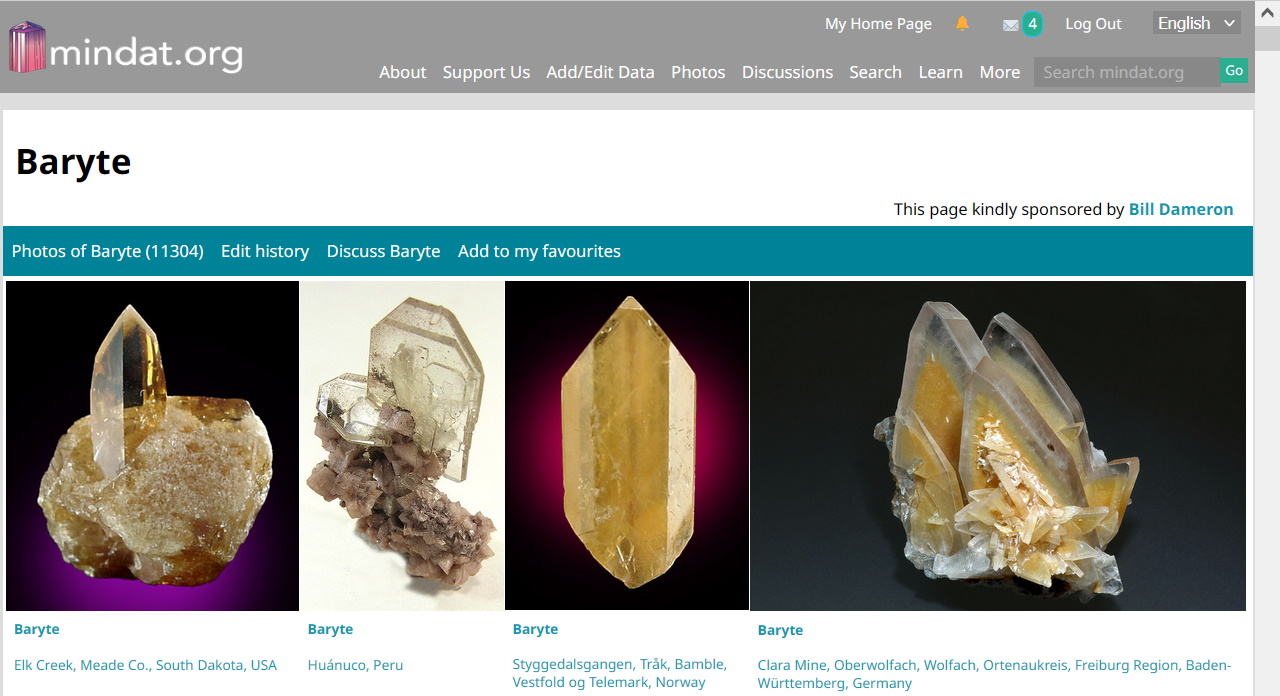 My favorite collecting place is along the New Castle Reservoir Road. Note the green areas. That is where the road maintenance people have dumped dirt containing white barite nodules up to 2 inches in diameter. They collect it from barrow pits on both sides of the road. 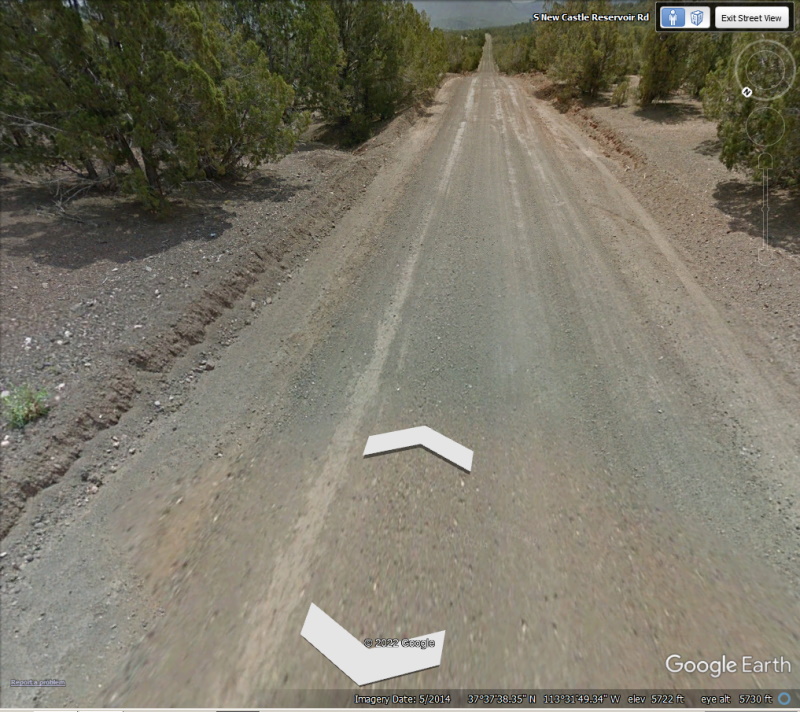 Mindat is only acquainted with the "Baryte" in Utah County, but they are scattered all over the state. 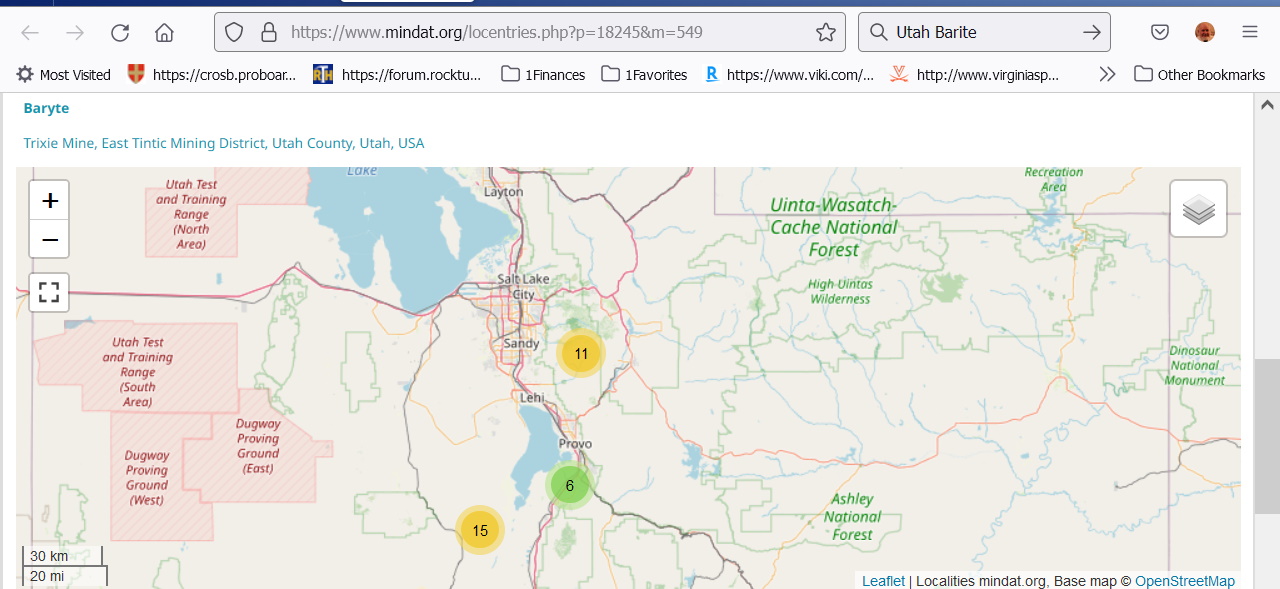 The preferred specimens are from Yellow Cat Flat north of Moab. 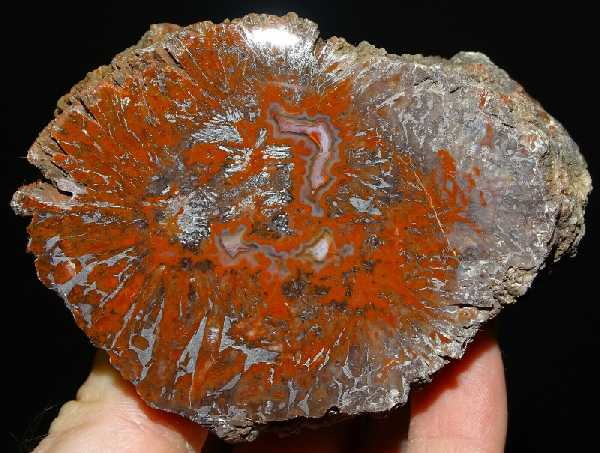 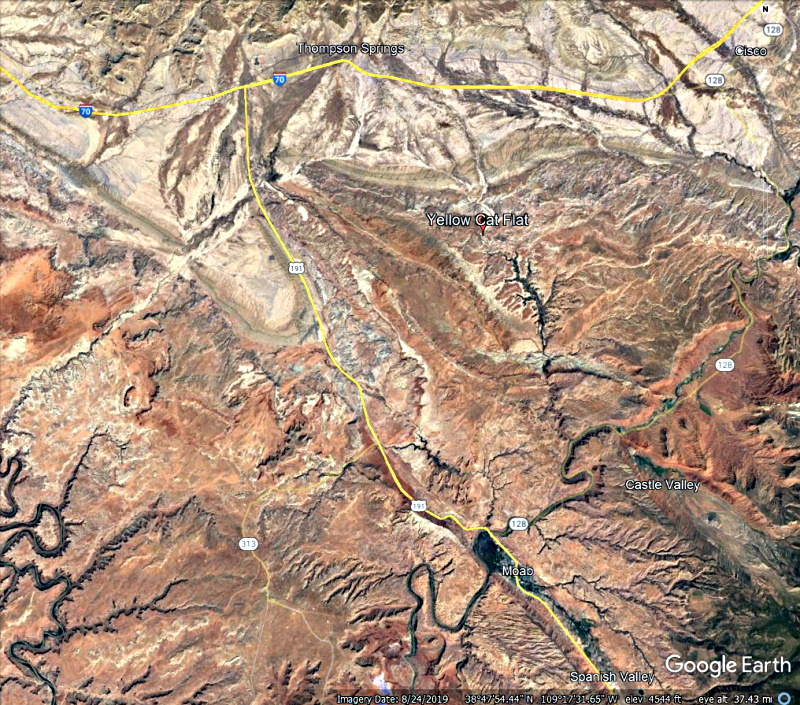 I've heard excellent crystals are found in the Book Cliff Mountains by Colorado. 
|
|
|
|
Post by hummingbirdstones2 on Nov 21, 2022 18:54:42 GMT -5
There was a good reason for the question mark in the thread subject line. This didn't have the structure seen in images I found online.
Thanks to vegasjames , amygdule , hypodactylus , and RWA3006 for confirming my suspicions. Grape agate images were a better match. Club members usually ask Robin and me for IDs, instead of the other way around, but some of the ones I asked went on those field trips.
Is the interior of this specimen typical of grape agate from that famous deposit? Before I sliced it open, I was guessing this one might be a more typical agate with fortifications and plumes.
Thanks to everyone who contributed. I could only look at pictures online and guess we might have gotten the wrong ID from the club folks.
As always, many thanks to 1dave for another educational addition to the RTH.
|
|
|
|
Post by hummingbirdstones on Nov 21, 2022 19:02:46 GMT -5
Y'all rock!  |
|
|
|
Post by Rockoonz on Nov 21, 2022 22:38:29 GMT -5
According to the Utah people I asked, the identical ones we have here are Barite pseudomorphs from yellow cat utah.
|
|
hypodactylus
spending too much on rocks
 
Member since July 2021
Posts: 481
|
Post by hypodactylus on Nov 22, 2022 0:04:29 GMT -5
According to the Utah people I asked, the identical ones we have here are Barite pseudomorphs from yellow cat utah. Out of curiosity, what features do they see that would indicate that these are barite pseudomorphs? I personally don't see any signs of barite having existed at any point in these specimens. I'd say they are a fine example of what is colloquially known as 'Utah Grape Agate', formed like a more 'traditional' agate nodule.
|
|
|
|
Post by 1dave on Nov 22, 2022 1:01:41 GMT -5
During the early Cretaceous there was a lake on the east side of the San Rafael Swell that was covered with stromatolites. The clear crystals are celestite. 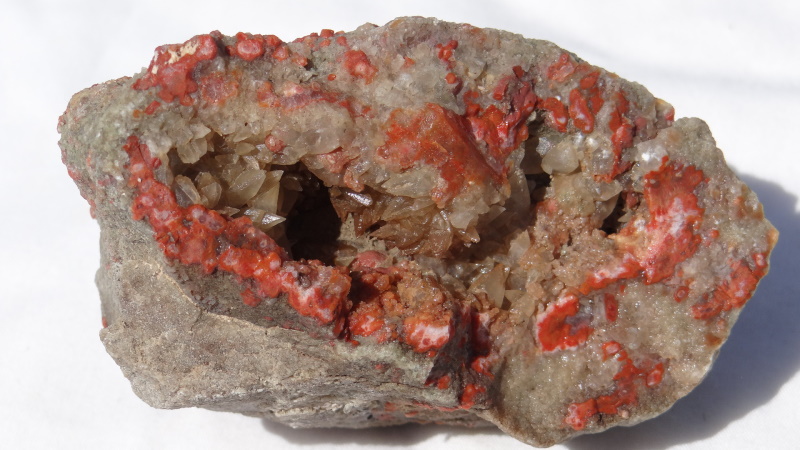 I believe Win gave me this image. 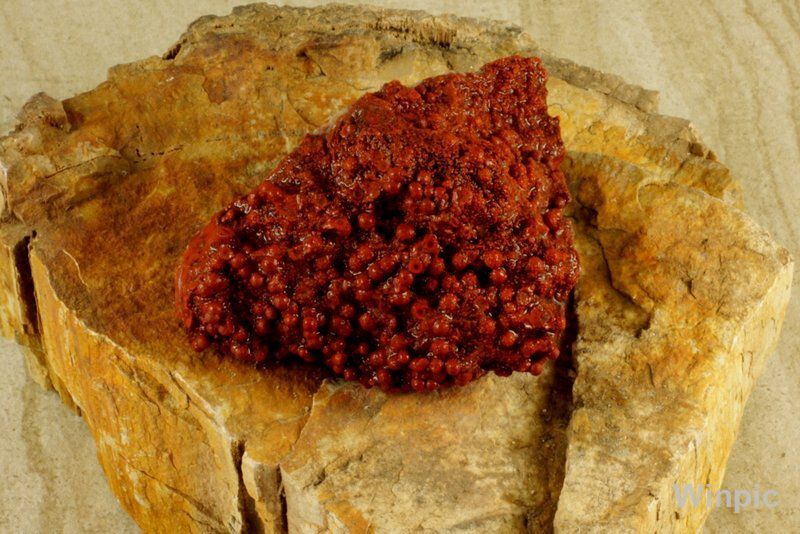 Some I collected 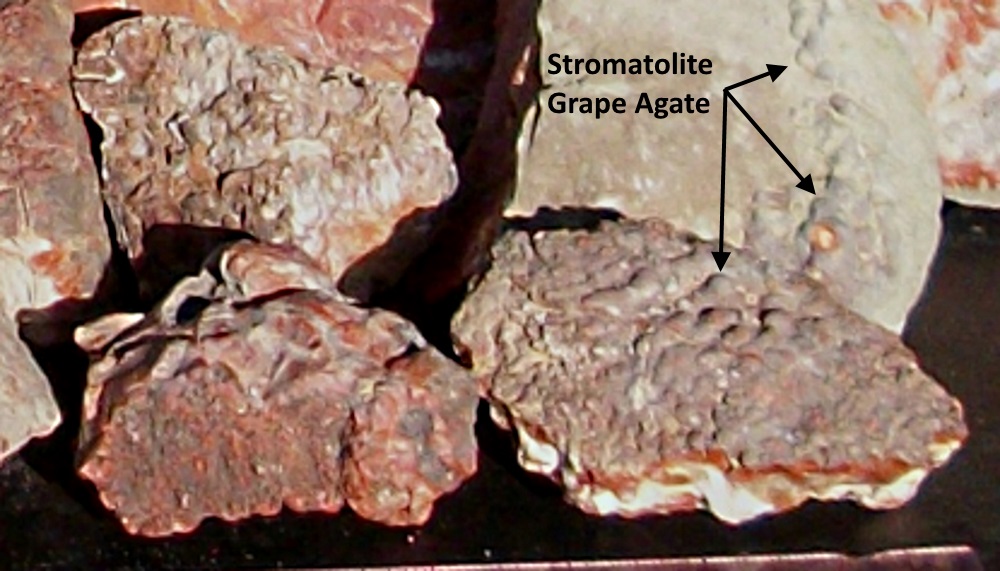 Location: 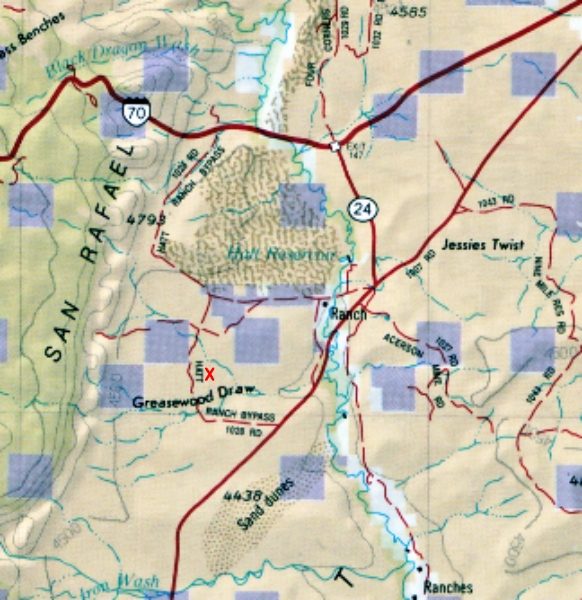 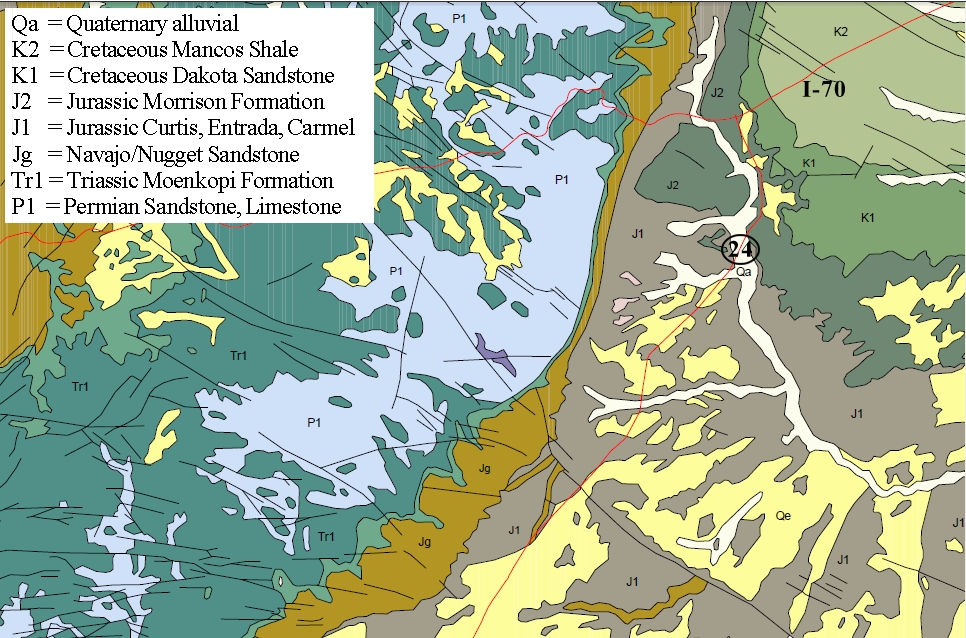 The San Raphael Swell   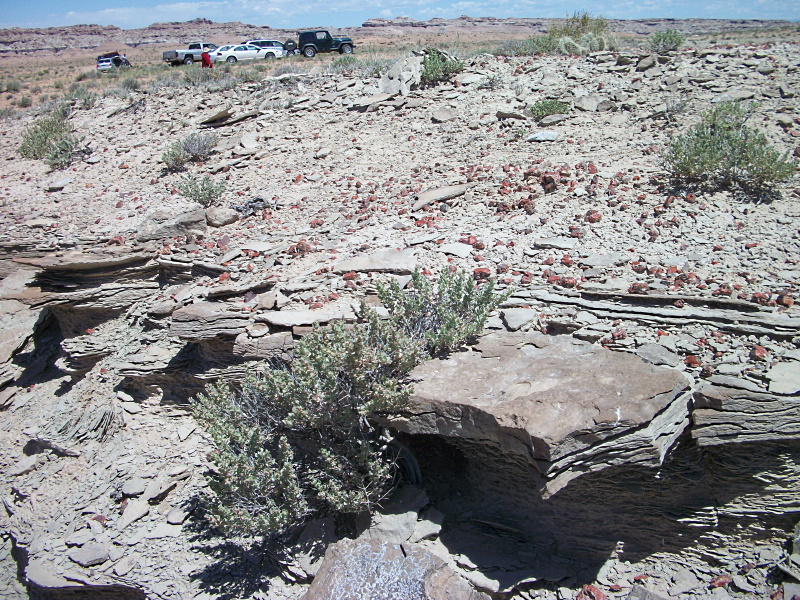 |
|
|
|
Post by Rockoonz on Nov 22, 2022 1:39:31 GMT -5
According to the Utah people I asked, the identical ones we have here are Barite pseudomorphs from yellow cat utah. Out of curiosity, what features do they see that would indicate that these are barite pseudomorphs? I personally don't see any signs of barite having existed at any point in these specimens. I'd say they are a fine example of what is colloquially known as 'Utah Grape Agate', formed like a more 'traditional' agate nodule.
I joined a couple FB Utah rockhounds groups because my intention is to do some trips there in the future. When I got several containers of rocks labeled as Utah rocks in an estate I posted some cut and uncut photos of a few things and those got the yellowcat ID with no disagreement. I have no intention of having a debate with them. When looking at anything fossil or pseudomorph there are entire ranges of things, for example Pet wood easily identifiable by fine grain deal or a limb cast. Difference has to do with the rate and amount of decay of the original occupant of the space in relation to the speed at which it is replaced, along with myriad more factors way above my pay grade. I don't think of a limb cast as pet wood, but it still started out that way, in fact all agate and true jasper were once something else, a vug, gas bubble or a crack that got filled. It's not unreasonable to think these might be that, but honestly all I care about is what I can do with it, and in my opinion the single cab I cut from it was also the last one. They are mostly ketchup and mustard balls and not overly exciting to me.  |
|
|
|
Post by hummingbirdstones2 on Nov 22, 2022 9:20:09 GMT -5
Oh yeah. Now we're gettin' somewhere. I appreciate the detailed discussions of features used to ID various rocks on RTH.
Our gem and mineral club has collected at both the grape opal agate site, and at yellow cat.
I can understand if they didn't remember exactly where a specimen was from, and I have no clue other than photos I find online.
|
|
|
|
Post by Rockoonz on Nov 22, 2022 11:01:50 GMT -5
Oh yeah. Now we're gettin' somewhere. I appreciate the detailed discussions of features used to ID various rocks on RTH.
Our gem and mineral club has collected at both the grape opal site, and at yellow cat.
I can understand if they didn't remember exactly where a specimen was from, and I have no clue other than photos I find online.
If the "grape" material is opal, it is definitely not what I cut the cab from, too hard to be opal. Did the club also collect at the litter box? When I googled to look for more info on yellowcat I found an old field trip page for a club that mentioned collecting at yellowcat and the litter box, seemed appropriate. I always look forward to opportunities to learn about all my mislabeled material. Since my collecting activities have been largely limited to places that other people take me to, and mostly the NW, the stuff I have accumulated from sales and estates has a lot of mystery rock in it. Or I knew once what it was and forgot the name. |
|
fuss
spending too much on rocks
 
Member since October 2018
Posts: 258
|
Post by fuss on Nov 22, 2022 11:39:10 GMT -5
|
|
hypodactylus
spending too much on rocks
 
Member since July 2021
Posts: 481
|
Post by hypodactylus on Nov 22, 2022 17:29:07 GMT -5
Thanks!
I was just wondering if there was any specific reason why the rock shown would be considered a barite pseudomorph. I personally don't see anything about it that would indicate that it had anything to do with barite at any point in its 'lifecycle', other than being potentially misnamed by us rock people.
|
|
|
|
Post by 1dave on Nov 22, 2022 18:25:57 GMT -5
Who really knows what has been jammed together?
|
|
|
|
Post by vegasjames on Nov 22, 2022 19:23:40 GMT -5
1dave that’s the truth, this particular specimen doesn’t visually resemble grape agate or barite to me. I think barite nodule might be a generalization used by rockhounds who know what they found is not a grape agate, and also know that barite nodules are found in the same area. I agree, looks nothing like barite. Looks like a common chalcedony nodule. |
|

